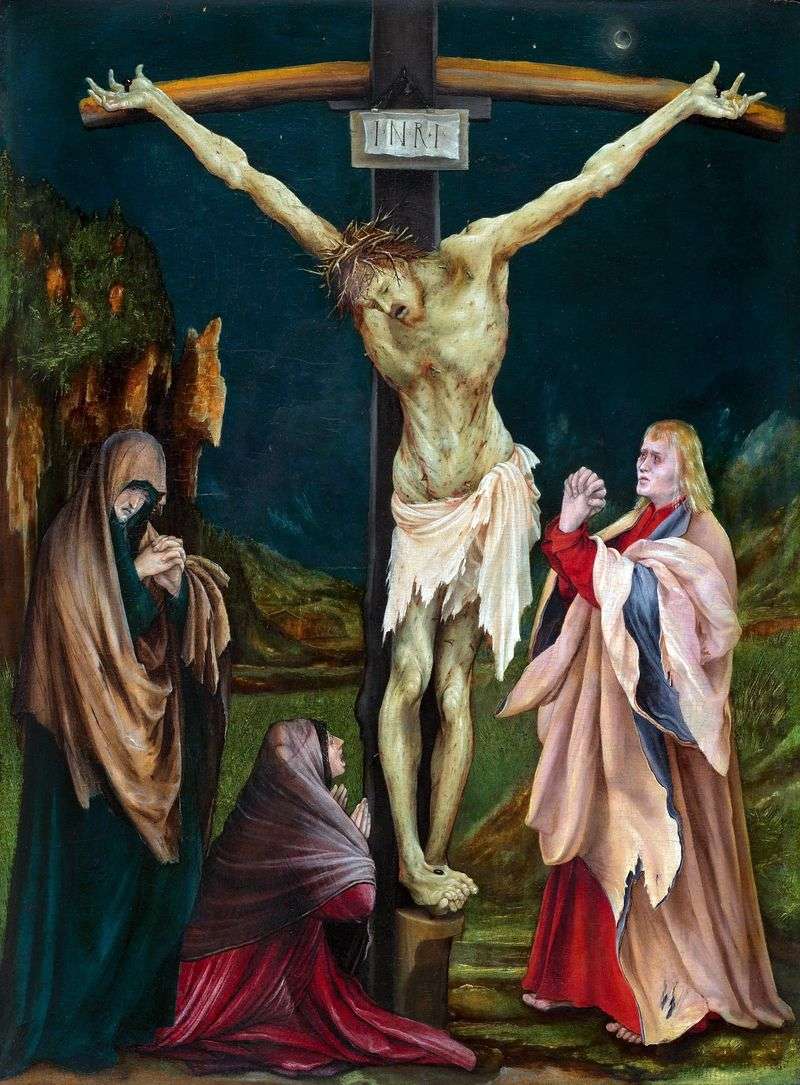
The work of Matis Grunewald fell on a tragic period in the history of Germany, connected with the era of the transition from the Middle Ages to the Renaissance, with the time of the Reformation and Peasant War. It is assumed that the artist participated in this war on the side of the insurgents.
Grunewald, presumably, studied painting with Holbein the Elder, then perfected in the arts in the Netherlands. The main work of Grunewald was the nine-part Isenheim altar, which has no equal in German art in terms of the complexity of the theological program and the means of embodiment.
The presented work was created at the beginning of the creative path of Grunewald, but the characteristic features of the artist’s art associated with the tragic perception of life, the mystical movements of the age and theological quest, as well as iconography, means and techniques, which the artist then addressed in subsequent works, were already determined in him.
The image of Christ is mercilessly grotesque, expressive. His body is broken in flour. Emotional power of the image gives bright colors in the clothes of the upcoming. Among the famous works of the artist – “Crucifixion” from the Tauberbischofsheim altar.
 Pequeña crucifixión – Mathis Grünewald
Pequeña crucifixión – Mathis Grünewald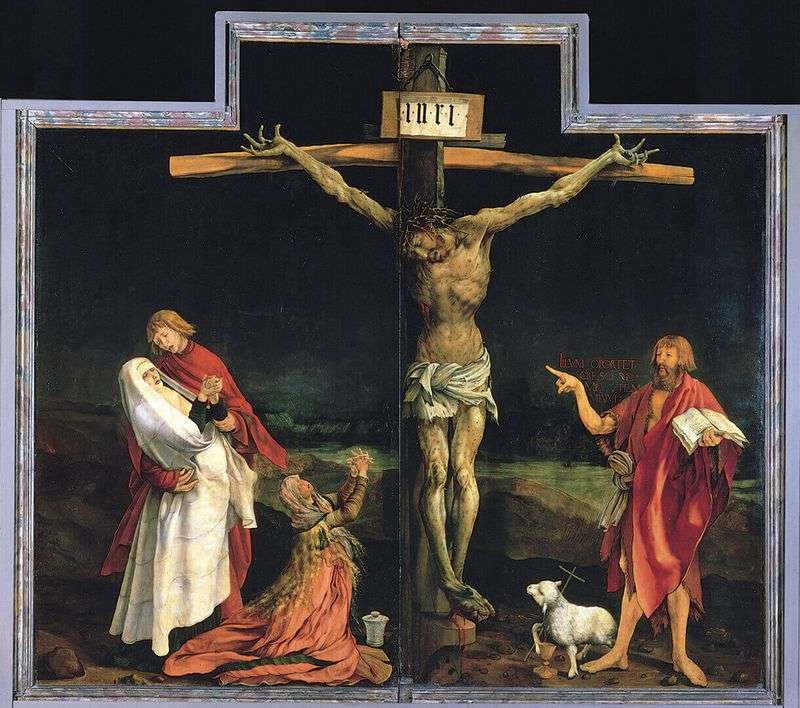 The Crucifixion by Matthias Grunewald
The Crucifixion by Matthias Grunewald Isenheim Altarpiece by Matthias Grunewald
Isenheim Altarpiece by Matthias Grunewald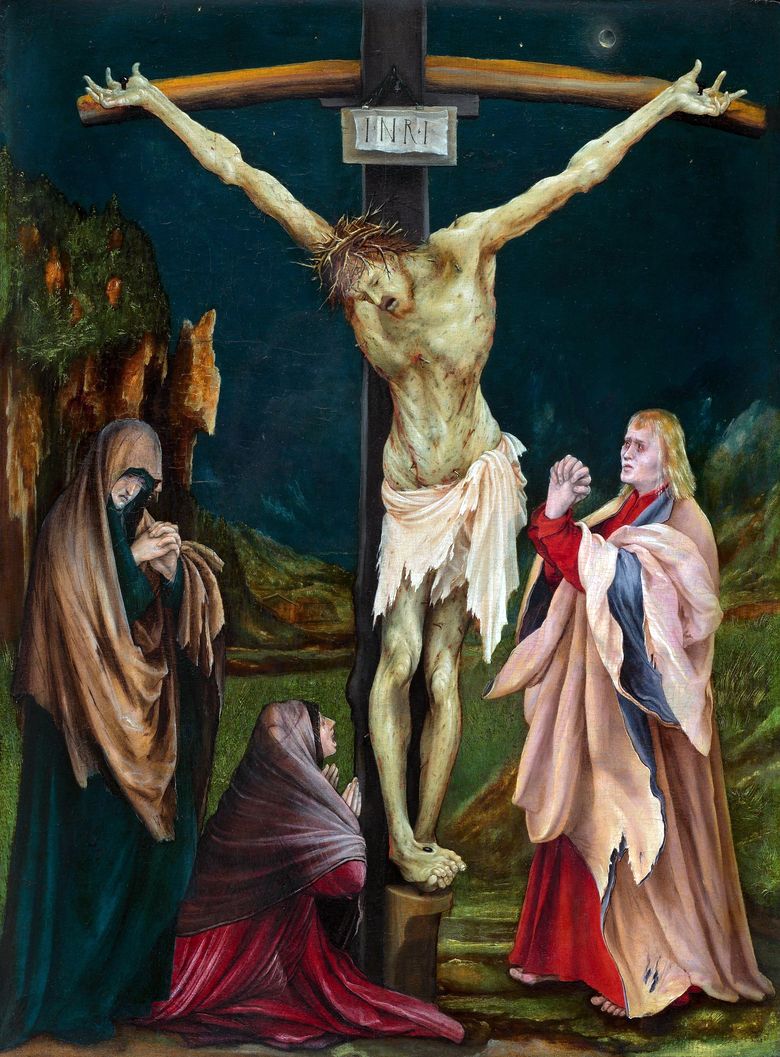 La crucifixion – Matis Grunewald
La crucifixion – Matis Grunewald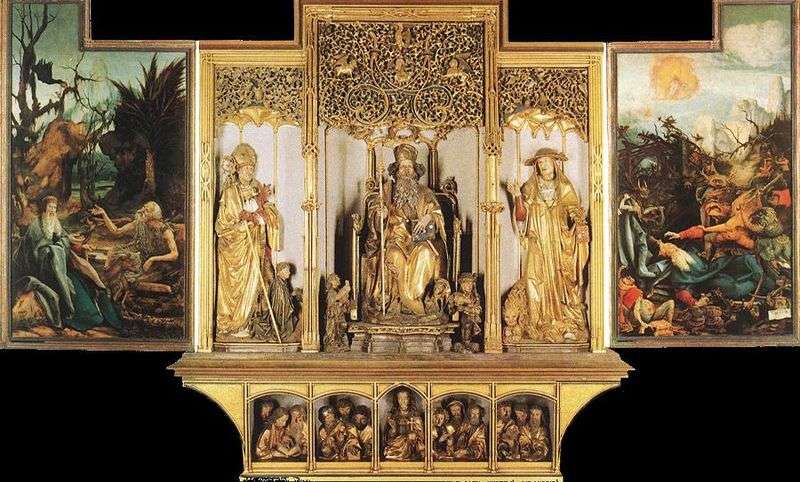 The Isenheim altar sculptural composition by Matthias Grunewald
The Isenheim altar sculptural composition by Matthias Grunewald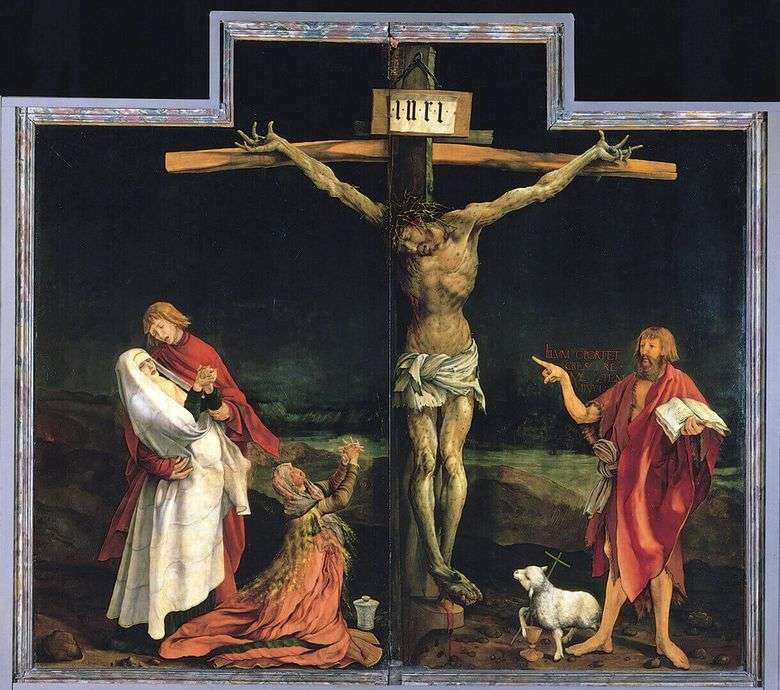 Crucifixión – Matteas Grunewald
Crucifixión – Matteas Grunewald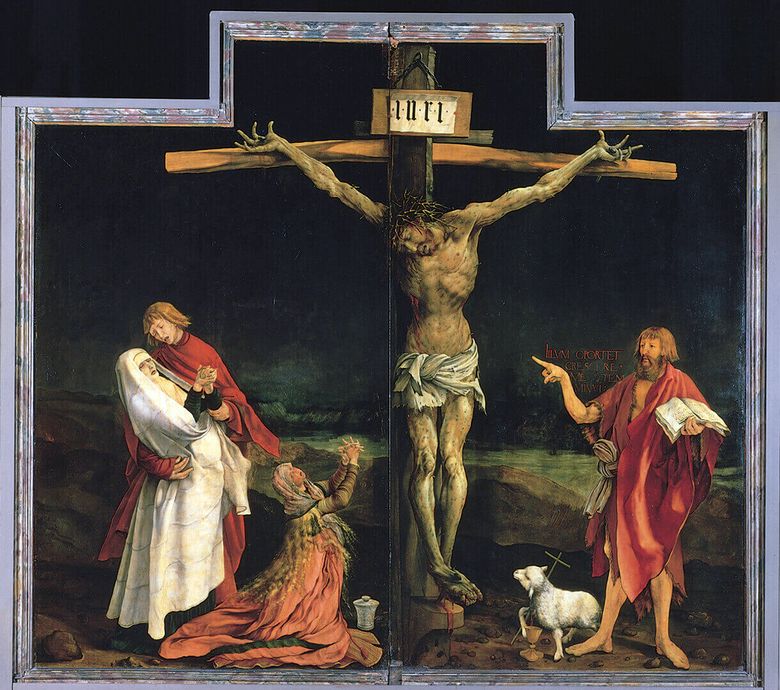 Crucifixion – Matteas Grunewald
Crucifixion – Matteas Grunewald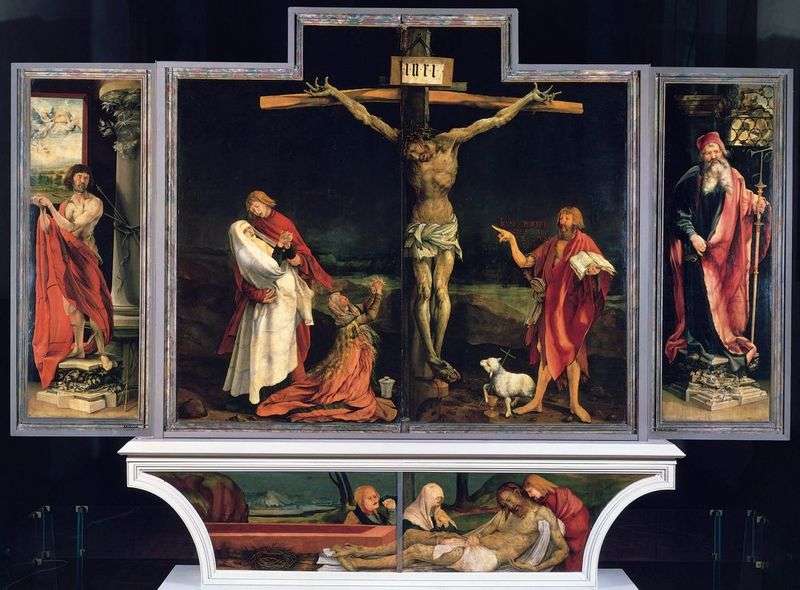 Isenheim altar, the first reamer by Matthias Grunewald
Isenheim altar, the first reamer by Matthias Grunewald